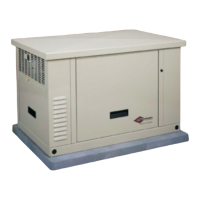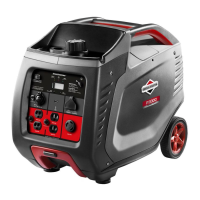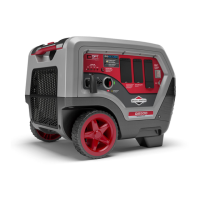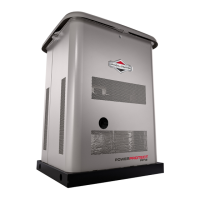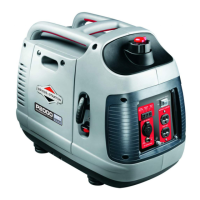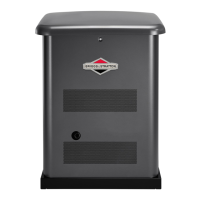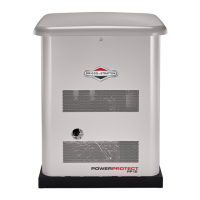7
Briggs & Stratton Power Products Home Generator
Operator’s Manual
• Install the unit where air inlet and outlet openings will
not become obstructed by leaves, grass, snow, etc. If
prevailing winds will cause blowing or drifting, you may
need to construct a windbreak to protect the unit.
• Install the generator as close as possible to the Transfer
Switch to reduce the length of wiring and conduit.
• Install the generator as close as possible to the fuel
supply to reduce length of pipes.
IMPORTANT: Laws or local codes may regulate the
distance to the fuel supply.
The Home Standby Generator is shipped already attached
to its mounting pad. Unless mandated by local code, a
concrete slab is not required.
If mandated by local code, construct a concrete slab at least
3 inches thick and 6 inches longer and wider than the unit.
Attach unit to slab with 1/4” diameter (minimum) masonry
anchor bolts long enough to retain the unit.
Essential Circuits
As a Home Standby Generator owner, it is important that
you clearly identify the circuits in your building that are
"essential" to you.
It is important that your installer understand which
circuits
you want to include as "Essential Circuits". Depending on
the power consumed by these circuits, most or all of them
can be switched to the Home Standby Generator for the
duration of normal power interruption.
The wattage reference guide shown in Figure 2 will assist
you with your decision-making process. It provides the
wattage used by many ordinary household devices. Use it as
a guide when selecting your essential circuits. Review this
information with your installer and ask about any technical
considerations that might affect the cost of your installation.
Figure 1 — Home Standby Generator Clearances
Exhaust
Port

